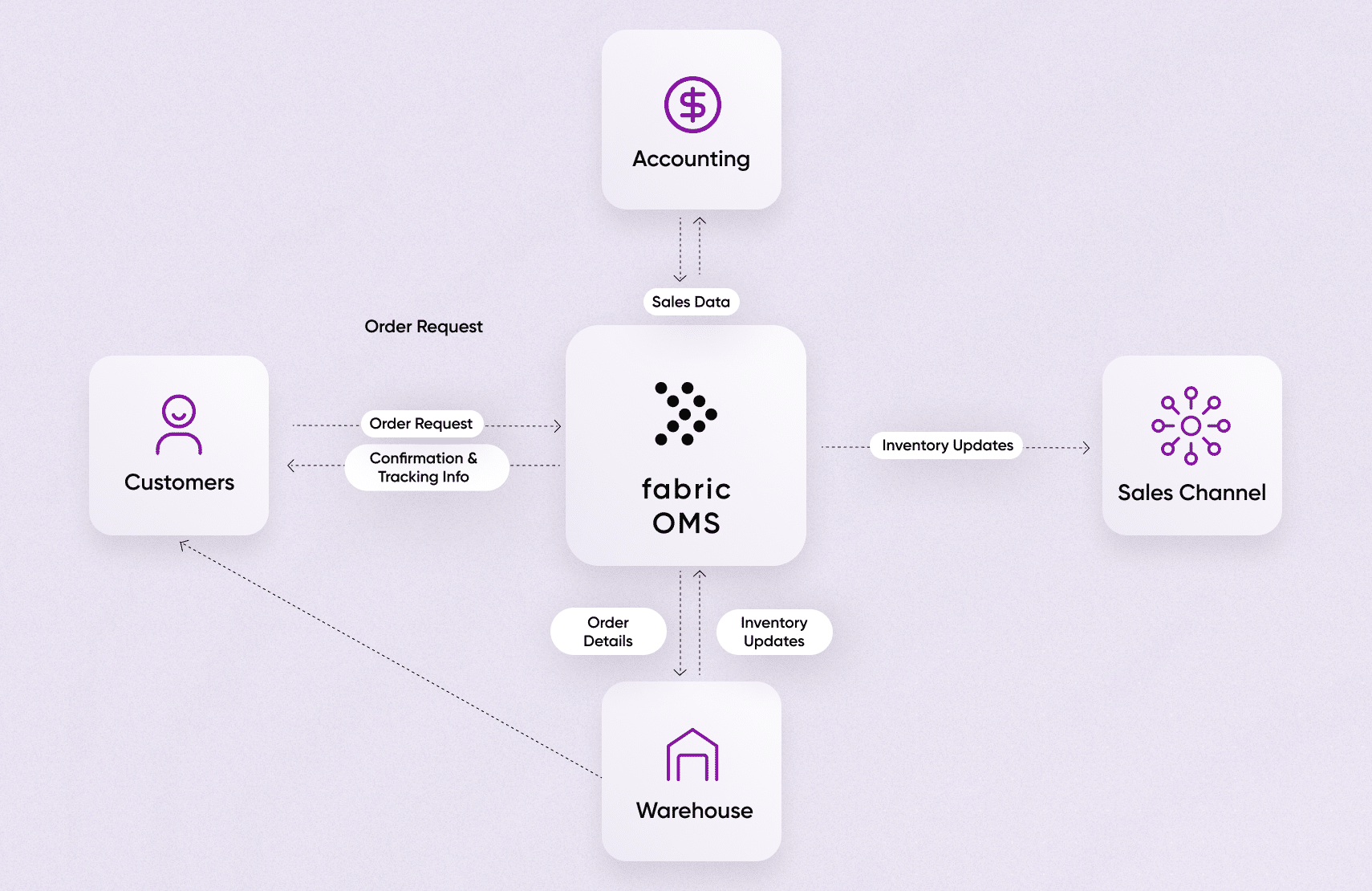How Order Lifecycle Management Works

Order lifecycle management is a way to manage end-to-end order fulfillment and provide visibility to customers regarding their orders.
A typical order lifecycle management system integrates with CRMs, payment solution providers, and 3PLs—making it possible for customers and retailers to benefit from a smooth customer-retailer interaction.
Successful companies like Starbucks rely on the effectiveness of an order lifecycle management system to have a 360 overview of their order fulfillment process. Starbucks uses OLM to manage its BOPIS and delivery systems seamlessly.
fabric OMS has an OLM that helps retailers manage the order lifecycle of all their sales channels on a single platform, making it the perfect order lifecycle management platform to ensure a good customer experience.
[toc-embed headline=”Order Lifecycle Management Definition”]
Order Lifecycle Management Definition
Order lifecycle management (OLM) plays a key role in helping companies streamline their order process flow from order placement to post-delivery services. It ends when the order touches a customer and is designed to provide a seamless experience for both consumers and businesses.
This process is not a standalone one. In fact, order lifecycle management can not be executed without an order management system (OMS).
[toc-embed headline=”Overview of Order Lifecycle Management”]
Overview of Order Lifecycle Management
With 51% of shoppers wanting real-time visibility into the status of their orders, retailers need to invest in order lifecycle management. A lifecycle management system integrates with a variety of platforms, including customer relationship management (CRM) platforms, payment solutions, and other third-party services to give retailers and their customers visibility.
A typical order lifecycle management process looks like this:
- Order placement: The customer lands on a website and initiates an order. The OLM then starts processing it.
- Order orchestration: The lifecycle management system captures order details, and the order awaits approval. Once the order is reviewed and approved, the system submits it for fulfillment.
- Transaction settlement: Before orders are submitted to the distribution system, the OLM identifies the appropriate fulfillment process and channel for the pick-pack-ship. This entire process is called fulfillment logic, and the order is fulfilled only after this step.
- Return management: At this stage, customers can return orders. The OLM receives and processes these requests in the system. And after processing the requests, the customer is refunded.
Order lifecycle management and OMS

Order lifecycle management and OMS work in tandem. To fulfill customer orders and gain visibility into their inventory, retailers use order management software, which is the engine that runs the end-to-end order process flow and lifecycle management.
Retailers also leverage order lifecycle management to monitor every segment of the customer interaction from the moment they land on the shopping site to the moment they receive their order.
This also happens to be one of the features of an OMS. Order management software that doesn’t integrate lifecycle management is useless because it can’t fulfill orders.
[toc-embed headline=”How Order Lifecycle Management Works”]
How Order Lifecycle Management Works
Effective order lifecycle management moves an order from placement to fulfillment with a focus on customer satisfaction and meeting business objectives. Here is how it fits in some fulfillment methods.
BOPIS
Buy-online-pickup-in-store (BOPIS) is an order fulfillment model that allows retailers to meet customer expectations and make purchases easier. BOPIS is so effective that nearly 67% of shoppers in the U.S. have used it in the past six months.
Without proper lifecycle management, customers can’t place their order online, and once in the store, they don’t know the status of their order. Therefore, order lifecycle management makes BOPIS possible.
An effective order lifecycle management system lets customers know which store is closest to them and provides them with real-time data for their order and when to pick it up. It also lets retailers overview the in-store inventory so people can’t order when a store is out of stock.
Where is my order (WISMO)
In the e-commerce industry, WISMO is a loose term for inbound customer inquiries. With over 90% of online shoppers expecting to receive updates on their shipments, only retailers with a lifecycle management system in place can cope.
With an OMS that integrates order lifecycle management, retailers can pull real-time data from orders and coordinate with third-party logistics (3PLs) providers to inform customers of the status of their items.
As a result, there are few customer service problems and customer complaints, contributing to an improved customer experience.
[toc-embed headline=”Example of Order Lifecycle Management”]
Example of Order Lifecycle Management
With over 33,000 locations, Starbucks is one of the largest restaurant chains in the world. As a company that receives around 30 million orders per day, Starbucks relies on an event-driven OLM for visibility on orders and to inform customers of their order status.
Typically, when customers order a product via their mobile application, they receive an SMS or email update from Starbucks order lifecycle management software. Starbucks can streamline its order fulfillment process and increase customer satisfaction by tracking the end-to-end order lifecycle.
Starbucks’ order lifecycle management also integrates with delivery services, allowing customers to get orders through Uber Eats. This on-chain system also requests customer feedback and ensures customer satisfaction by providing data that helps Starbucks meet or exceed delivery expectations.

Tech advocate and writer @ fabric.